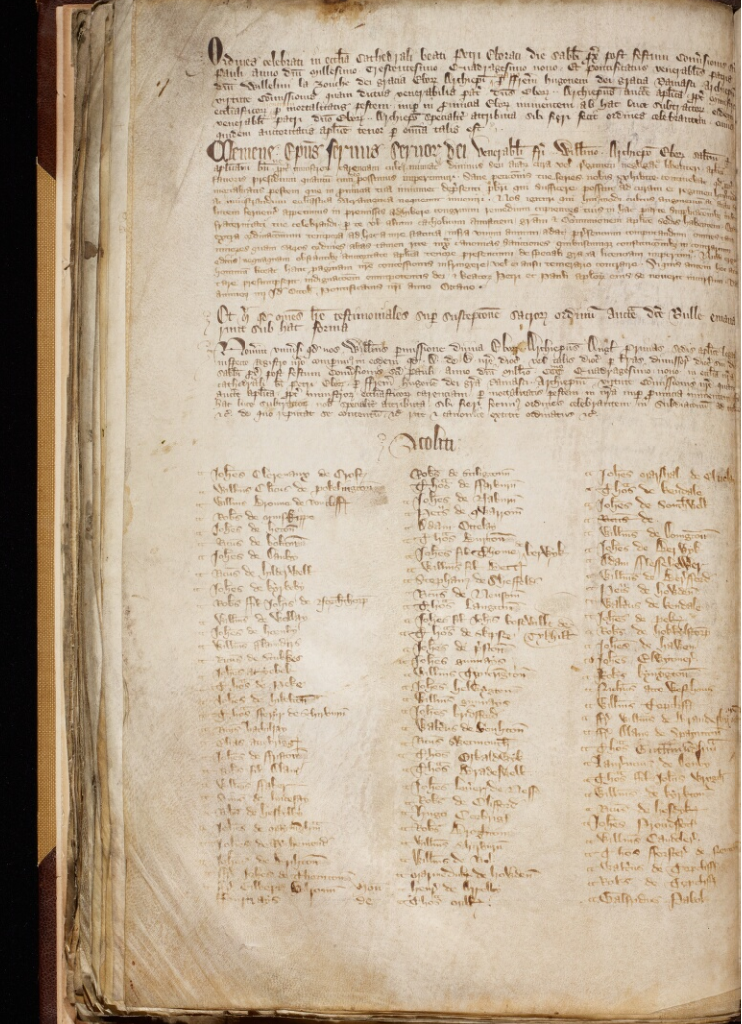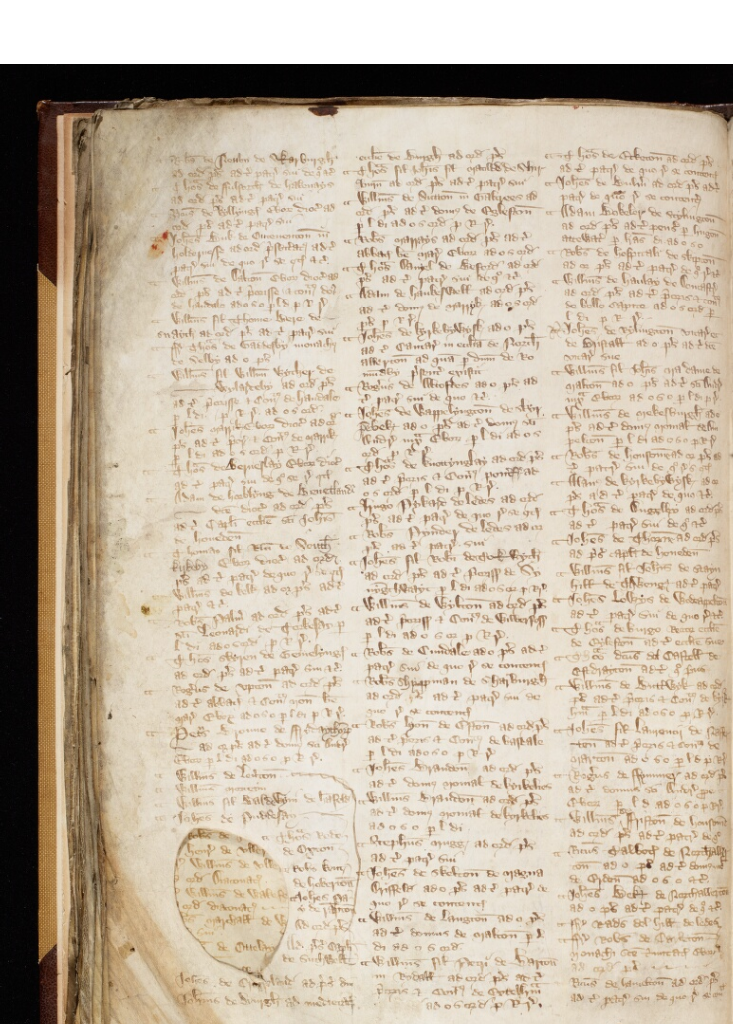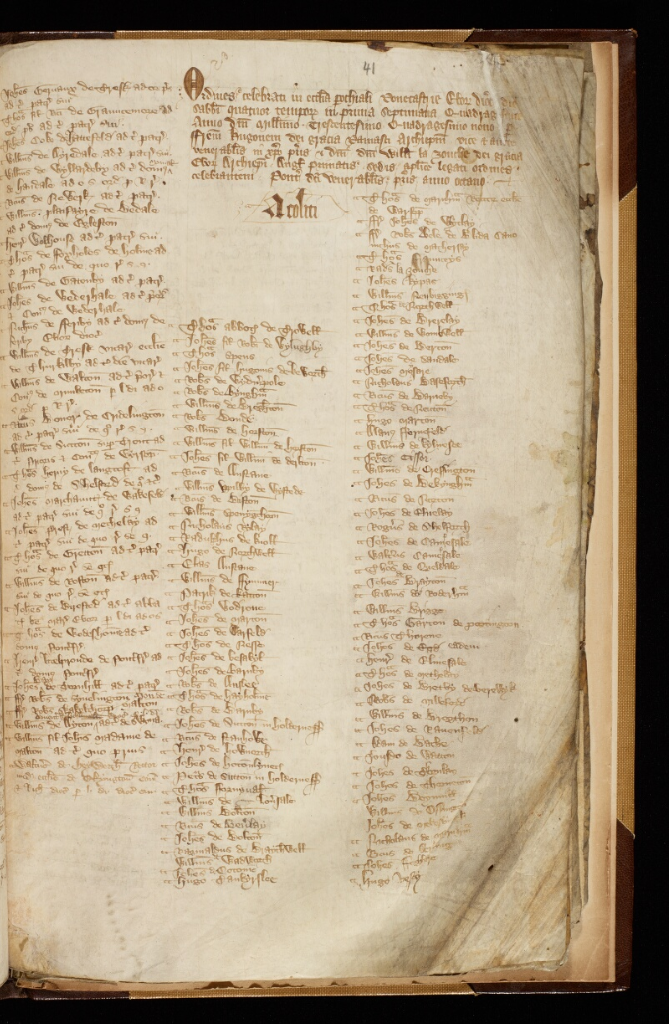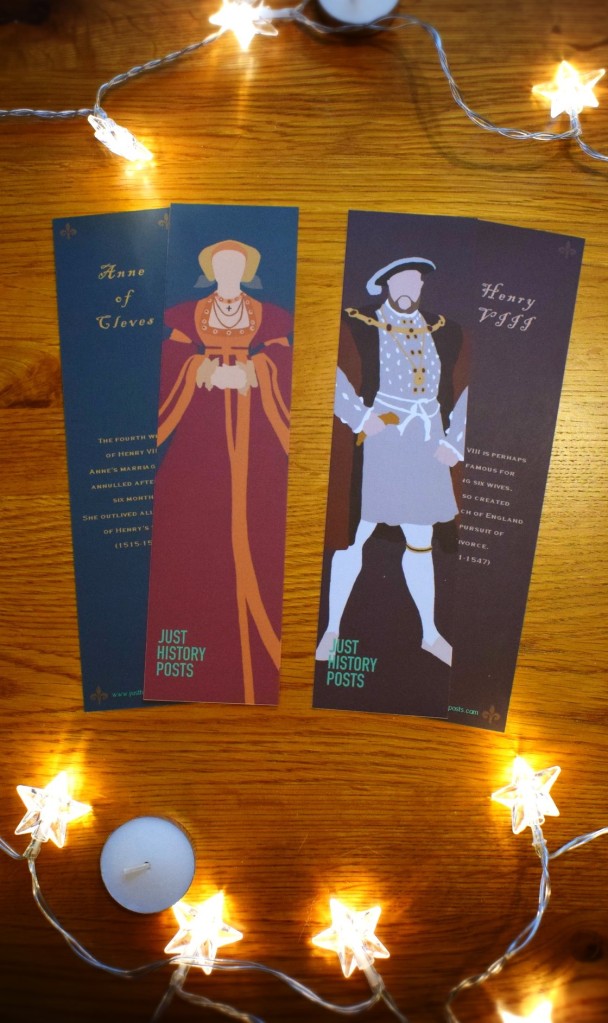Following on from my previous blog post, where I discussed the idea that the use of historical pictures in social media could highlight to modern eyes the humanity of people who lived long ago, I thought I would delve deeper into this idea by looking at examples from medieval manuscripts. During my Masters, I was lucky enough to take palaeography classes at the Borthwick Institute for Archives where many interesting tid-bits from manuscripts were shown to me. Some of them made us laugh – for example, on one of the blank pages of a huge important medieval register from York, a child had scribbled a very faint drawing on the page – clearly it was bring-your-child-to-work-day and this child had to get hands on. Other humorous examples can be seen elsewhere – one such image that I have seen make the rounds on social media many times is from a fifteenth-century manuscript from Dubrovnik. On some of the pages, ink paw prints from a cat can be found walking across the page.
 Image from National Geographic, here
Image from National Geographic, here
As someone who once had to write on her A-level maths homework an apology note to her teacher after her cat walked across her homework leaving muddy paw prints behind, this is something I can relate to greatly!!
Further relatable examples can be found in plenty of manuscripts across time and place – as I said in my last blog post, the writers were real people who got bored and wanted to doodle, or thought they would leave a humorous addition to the text for the next reader. Another example comes from Beinecke MS 594, a manuscript copied in England between 1400-1500 of Latin to English vocabulary. At the bottom of many of the pages, the student, who had clearly become bored (as anyone who has ever studied Latin vocab can relate to without hesitation) started scribbling a variety of pictures, some of which are shown below.


So far, these examples have shown how even manuscripts written hundreds of years ago by people we wouldn’t think we would have anything in common with can make us laugh and nod in sympathy with the creators. However, whilst I was at the Borthwick, one week of manuscripts stuck out deeply in my mind, and nearly brought me to tears. This was the week we looked at the Archbishop Registers from York.
One of the manuscripts our archivist showed us was the Ordination register from Archbishop William Zouche, which covered the years 1342-1352. (The register can be found here). He opened it to a page from 1349. In May, 1349, the Black Plague reached Yorkshire. Estimates of the death toll of the Black Plague across Europe in the fourteenth century range from 30-60% of the population – this was an unimaginable horror where entire villages, towns, families, were wiped out. Religious men and women were often some of the hardest-hit populations, as it was their job to administer last rites, take confessions, and pray for the sick. This reality was shown no better than in Zouche’s register. These entries from 1349 are filled with pages upon pages of names: as clergymen died, leaving churches vacant, new clergymen had to be hastily appointed. Some entries show the list of new clergymen from the past week – some are as quick as to be day by day lists. They were essentially dying quicker than the scribe could write the list of that day’s newly appointed churchmen. An example of one entry’s list is below:






Folios 38 verso – 41 recto. The next entry’s list of newly ordained clergymen begins at the big ‘O’ at the top of the last page (and includes the second and third column of names)
Seeing our archivist flip page by page by page, with columns and columns of names, then saying “and that was the end of one day” and then flipping through pages more and going “that was the end of the next day” is an experience I can’t describe. It’s the kind of sad, sickening sorrow one experiences watching images from our more horrific recent history such as from concentration camps. There were no devastating images of people dying from this horrific disease, a plague that killed millions of people, but somehow seeing pages and pages of names in front of you like that really brought the reality home. We couldn’t even begin to imagine an outbreak like that happening today. Every name represented a death of the previous holder of that post. I’ve spoken lots about how images and manuscripts can help us connect with a past that experienced life in a completely different way to our modern world, and this was one of the closest ways I’ve felt able to even begin to empathise with those who lived through the horrors. It has been estimated that over 40% of the beneficed clergy (clergy with parish churches in their care) died in July and August 1349 alone. No wonder the pages had to be so hastily filled. On one page, there is what appears to be a blood splatter.

Our archivist didn’t think that it could be dripped wax, as the colour didn’t fit with other examples he had seen of that. It was common for scribes to cut themselves whilst writing, as they held a knife which they used to hold pages in place whilst writing, and it also was used to sharpen the nib of their quill when it became blunt. It is entirely possible that this splatter was simply a result of a scratch whilst hastily writing in all of these names. It does, however, evocatively suggest another scenario presented to us by our archivist: that the scribe himself was perhaps infected with plague, and started to cough up blood whilst writing.

Enjoying this blog post? Buy me a hot chocolate!
Consider donating the cost of a hot chocolate to me, so I can continue to write and run Just History Posts.
£3.50
Clearly, then, manuscripts can give us an insight into the people who lived in the past beyond just what is written in the text. This insight can make us laugh, make us cry, but it is always a way for us to connect with people who lived ordinary lives just like we do, even if they experienced it in a different way to us. Hundreds of years may seem long ago, but in reality, our humanity is the same.
Previous Blog Post: Medieval Reacts and Two Monks: History in Social Media
List of Blog Posts: here Blog Homepage: here
Buy my books via the pictures below! Or why not check out our shop?

Follow us:






Reblogged this on Tome and Tomb.
LikeLike